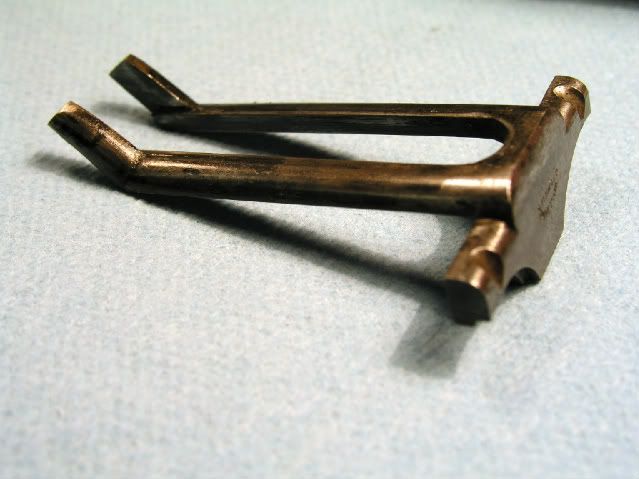OWD, the gun locks up on the lower rib extension, very similar to that found on Lefevers, Smiths or Foxs. If you'll take a close look at the lower extension you'll see the lower portion of it is somewhat rounded. When closing the gun this rounded area pushes the spring loaded bolt to the side. It was patented by W&P as the "Simplex" action. It worked but frankly there were better designs. I've wondered if they came up with this to circumvent Purdey's patent. The top lever is also unusual and probably did not invade Scott's Patent lever.
The thing-a-muh-jig running alongside the lumps is a split extractor. There are slots milled in the watertable that the extractor doglegs go into and when the action is opened the extractor is cammed to the rear for extraction. It is a very good design and eliminates the need to weaken the breech by boring a extractor rod hole through the lug. Its downside is it would be devilishly difficult to repair.
The gun carries its original black powder proofs. It is in nearly 100% condition, having been shot very little. In fact, it still has that stiff "new gun" feel to it. Nary a screw has been turned. Oh, I did have a good smith remove the locks once and what a sight they were. Underneath the dried 130 year old oil was the most beautiful lockwork I've ever seen. Not a speck of rust on the perfectly polished pieces. And the wood inletting appeared as crisp as if it had been done yesterday. No camera with me at the time and I'll probably never pull them again--that lock screw was tight--scared me almost to death when he put the twist to the screwdriver! Story on it is it came to the states at the end of WW1 by a returning doughboy and remained in its case unfired. At his death it passed to the grandchildren who had no use for it, etc....so I eventually ended up the proud owner.
